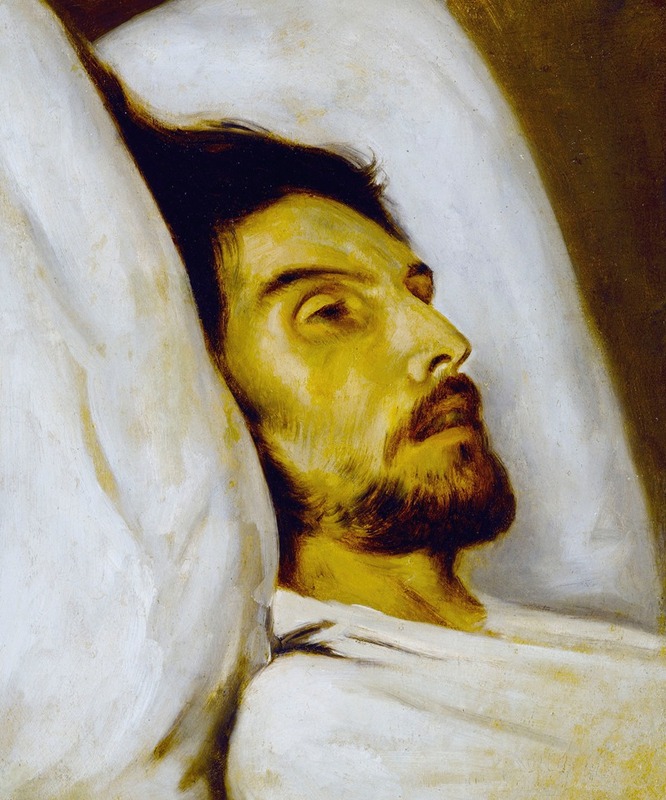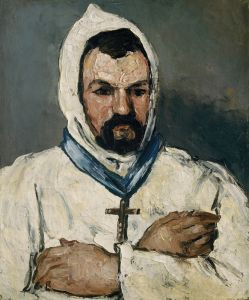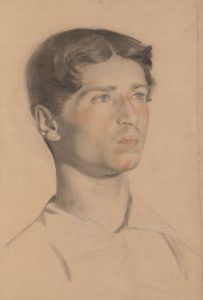
Portrait d’homme sur son lit de mort, autrefois dit Armand Carrel
A hand-painted replica of Paul Delaroche’s masterpiece Portrait d’homme sur son lit de mort, autrefois dit Armand Carrel, meticulously crafted by professional artists to capture the true essence of the original. Each piece is created with museum-quality canvas and rare mineral pigments, carefully painted by experienced artists with delicate brushstrokes and rich, layered colors to perfectly recreate the texture of the original artwork. Unlike machine-printed reproductions, this hand-painted version brings the painting to life, infused with the artist’s emotions and skill in every stroke. Whether for personal collection or home decoration, it instantly elevates the artistic atmosphere of any space.
Portrait d’homme sur son lit de mort, autrefois dit Armand Carrel is a painting by the French artist Paul Delaroche, created in 1843. The title translates to "Portrait of a Man on His Deathbed, formerly said to be Armand Carrel." The work is an oil painting on canvas and is part of the collection of the Musée des Beaux-Arts in Nîmes, France.
The painting depicts a man lying on his deathbed, his face pale and serene, with his eyes closed. The composition is intimate and somber, focusing on the emotional weight of the moment. The figure is shown in a horizontal position, partially covered by a white sheet, with his head resting on a pillow. The subdued color palette and delicate brushwork emphasize the solemnity of the scene, characteristic of Delaroche's style, which often sought to convey deep emotional resonance.
For many years, the subject of the painting was believed to be Armand Carrel, a French journalist, historian, and political figure who died in 1836 following a duel. However, this identification has since been questioned, and there is no definitive evidence to confirm that the man depicted is indeed Carrel. The title of the painting reflects this uncertainty, as it is now referred to as "formerly said to be Armand Carrel."
Paul Delaroche (1797–1856) was a prominent French painter known for his historical and portrait works. He gained fame for his ability to capture dramatic and poignant moments, often drawing from historical or contemporary events. Delaroche's works are characterized by their meticulous attention to detail and emotional depth, bridging the gap between Romanticism and academic art.
The painting is notable for its restrained and introspective approach, focusing on the universal themes of mortality and human vulnerability. Unlike many of Delaroche's larger historical compositions, this work is more personal and reflective, showcasing his versatility as an artist.
Today, Portrait d’homme sur son lit de mort remains an important example of Delaroche's oeuvre, illustrating his skill in portraying human emotion and his sensitivity to the complexities of life and death. The painting continues to be studied and appreciated for its artistic and historical significance.















